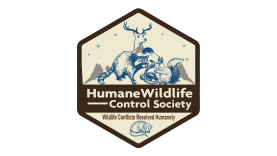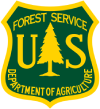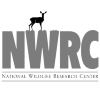Humane Wildlife Control in Buffalo, NY
The Humane Wildlife Control Society recommends non-invasive solutions to resolve human-wildlife conflicts. This includes:
Determining if the issue needs to be addressed at all
Opting for preventative measures first
Opting for wildlife exclusion as opposed to trapping
If trapping is the only way to solve the problem do so humanely
The Humane Wildlife Control Society screens candidates prior to recommendation. Our process requires any company we recommend to meet the following criteria:
Is properly licensed in New York for wildlife control
Carries appropriate business licenses and insurance
Complies with all New York laws and regulations for wildlife control
Adheres to the humane principles listed above.
In Buffalo, New York we recommend Humane Wildlife Removal Buffalo for professional wildlife control services. This is a private company that charges for their services.
Contact Information:
Pest Animal Removal Buffalo
716-650-4630
If you have any wildlife issues that can be handled by the state government agency for free, the New York Wildlife Commission can help.
State Contact Information: (518) 402-8883
The State Department of Agriculture may also be able to address your wildlife problem for no charge.
USDA Contact Information: (518) 457-2771
Humane Wildlife Control in Buffalo, New York: An Educational Resource Introduction Why Humane Wildlife Control Matters Protects Ecosystems: Every species plays a role in maintaining ecological balance. Reduces Conflicts: Ethical wildlife management prevents property damage and safety hazards. Promotes Animal Welfare: Humane control methods prevent unnecessary harm and suffering. Fosters Coexistence: Educating communities leads to long-term solutions that benefit both humans and animals. Common Wildlife in Buffalo and Ethical Management Strategies White-Tailed Deer Use deer-resistant plants in landscaping. Install fencing or motion-activated deterrents. Avoid feeding deer, as it disrupts their natural foraging behavior. Raccoons and Squirrels Secure trash bins with wildlife-proof lids. Seal entry points in attics and chimneys. Use one-way exclusion devices to allow animals to exit safely. Coyotes and Foxes Keep small pets indoors, especially at night. Use hazing techniques (loud noises, bright lights) to deter them. Do not leave pet food outside. Birds of Prey (Hawks, Owls, Falcons) Avoid using rodenticides, which can poison these predators indirectly. Protect small pets with enclosed outdoor spaces. Preserve natural habitats by maintaining tree cover. Bats Install bat houses to provide alternative roosting sites. Conduct humane exclusions outside of maternity season (May–August). Avoid using pesticides that can harm bat populations. Legal Considerations for Wildlife Control in Buffalo New York State Department of Environmental Conservation (NYSDEC) regulates wildlife removal and rehabilitation. The Migratory Bird Treaty Act protects many bird species from harm. Trapping and relocation of wildlife require permits and must be conducted humanely. Preventative Measures for Schools and Organizations Conduct regular inspections for potential wildlife entry points. Educate students and staff on proper waste disposal to avoid attracting animals. Work with local wildlife experts for guidance on humane control methods. Who to Contact for Assistance NYSDEC Region 9 Office (Buffalo): (716) 851-7200 Buffalo Animal Control: (716) 851-5694
Buffalo, New York, is home to a diverse array of wildlife, including deer, raccoons, squirrels, and birds of prey. As urban and suburban areas expand, human-wildlife interactions increase, making humane wildlife control essential. This resource provides fact-based guidance for schools, organizations, and individuals on ethical and responsible approaches to wildlife management.







